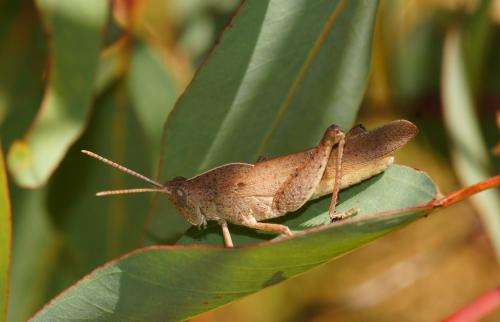Jurassic arthropod-plant interactions from the Australian fossil record

An international team has analysed Jurassic arthropod-plant interactions from the Australian fossil record.
Fossilised plants were inspected for insect 'bite marks' to determine insect-plant relationships during the Jurassic era.
"We've given ourselves a really good insight," paleo-entomologist Sarah Martin says.
"It's really a very important relationship between plants and arthropods at quite a key time in the evolution of both groups.
"Insects were becoming very modern in the Jurassic and into the Cretaceous.
"The Jurassic plants were becoming very modern which is just before the start of the angiosperms [flowering plants], so there were some interesting things going on in both groups.
"It shows us that there was quite a high diversity in feeding strategies in arthropods at the time and the plants themselves had quite a number of strategies to deal with that.
"It's not surprising because it's a very long relationship; arthropods have been relating with plants probably since the Carboniferous and probably earlier."
At the beginning of the Jurassic era (about 206-144 million years ago) Australia was the north-eastern part of the supercontinent Gondwanaland.
Angiosperms were yet to develop, but beetles, grasshoppers and bugs were munching away at the other plants in the continent's warm ecosystem.
As part of her PhD research, Dr Martin collected and described both fossilised insects and their leaf impressions from the Cattamarra Coal Measures, near Jurien in WA's Mid West, which were also used in the current study.
"They are certainly the only body fossil record of Jurassic insects in WA, and very likely the only terrestrial arthropods," she says.
She says arthropods other than insects were almost certainly present.
"All those groups probably, even likely, had interactions with the plants but we don't have body fossils so we can't really say if they were there.
She says trace fossils provide data beyond the body fossil record.
"If the particular traces are really iconic or obviously belong to a group then that might tell you that the group was there even if you don't see them directly in the fossil record."
Lead author Steve McLouglin, who is a Stockholm-based palaeontologist, photographed these and specimens from other Jurassic plant fossil collections before describing the damage arthropods inflicted on them.
The study relied on existing museum collections, so there was no attempt to quantify proportions of trace fossils per species.
"The study is a first look into something that we have haven't really understood very well before in Australia," Dr Martin says.
More information: Stephen McLoughlin, Sarah K. Martin, Robert Beattie, "The record of Australian Jurassic plant–arthropod interactions," Gondwana Research, Available online 16 December 2013, ISSN 1342-937X, DOI: 10.1016/j.gr.2013.11.009.
Provided by Science Network WA


















